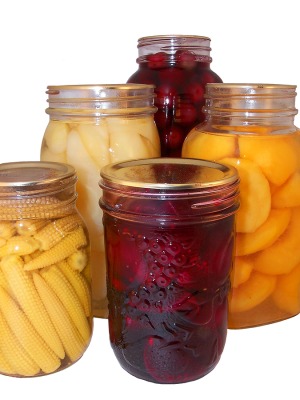|
Start Home Canning and Save MoneyHome Canning is making a comeback these days, and is a great way to save money! You may have memories of your grandmothers pantry shelves lined with beautiful glass jars filled with dill pickles, jams, jellies, meats, tomato sauces, fruits, and vegetables. You can have those same delicious foods on your pantry shelves too if you learn how to start canning fresh foods. The process of home canning isnt difficult once you have the right tools and techniques in place. How To Start Canning
The best place to start canning to save money is to get educated about the process of canning. The Blue Book of Canning is an excellent resource for outlining the steps for processing fruits, vegetables, and meats. Its packed with all the information you need to start home canning, as well as several recipes, so its a worthy investment. Although learning how to preserve food is somewhat time consuming, the money you save by canning fresh foods will far outweigh the time youve spent from start to finish. Canning EquipmentTo begin preserving your food, youll need the following canning equipment:

A few quick notes about jars, lids, and rings
ProduceThe best way to start home canning to save money is by making jam from fresh fruit or pickles from fresh cucumbers. Use only the freshest ingredients for canning. What you put into the jar is what will come out of the jar. Never use food that is past its prime. The easiest way to get fresh fruit and vegetables is to grow your own either in your own backyard or on a rented garden space. However, if those options arent available to you, visit a farmers market, fruit farm, or a U-Pick farm throughout the summer. Perhaps a friend who has a garden would be willing to trade you fresh produce for some jam or dill pickles. More Canning TipsCanning does require an initial investment, but its no different than starting your own business or learning any other new skill. Once the initial investment has been made, the savings will begin to show as you go through your pantry to shop instead of rushing out to the grocery store every time you need something. Home Canning equipment can be purchased at many stores, including Target and Wal-Mart, as well as online stores. Keep your eyes open at estate sales, garage sales, and thrift shops because sometimes these items show up there too. Dont be afraid to ask the older generation of ladies in your family or church if they might have equipment theyd be willing to sell or give to you. It may take a few months, perhaps even six months, to see the benefits of home canning in financial terms. However, if you price out the price of your produce and equipment and the yield of canned goods you reaped from your efforts, youre likely to find that your budget is thanking you! Note that nothing has been mentioned about low acid foods such as meat, fish and some vegetables. Low acid foods require processing in a pressure canner and that takes some finesse and experience, so its wise to get familiar and adept at water bath canning before tackling pressure canning.  Back to Grocery And Food Savings
 | | |
| | ||
| | ||
| | ||





